One of the great delights of travelling Vietnam is the food. Not only is it delicious, but it is everywhere: from the restaurants and eateries to the street stalls on just about every corner. You can feel like they’re constantly eating while in Vietnam, always grabbing for a stubby plastic stool.
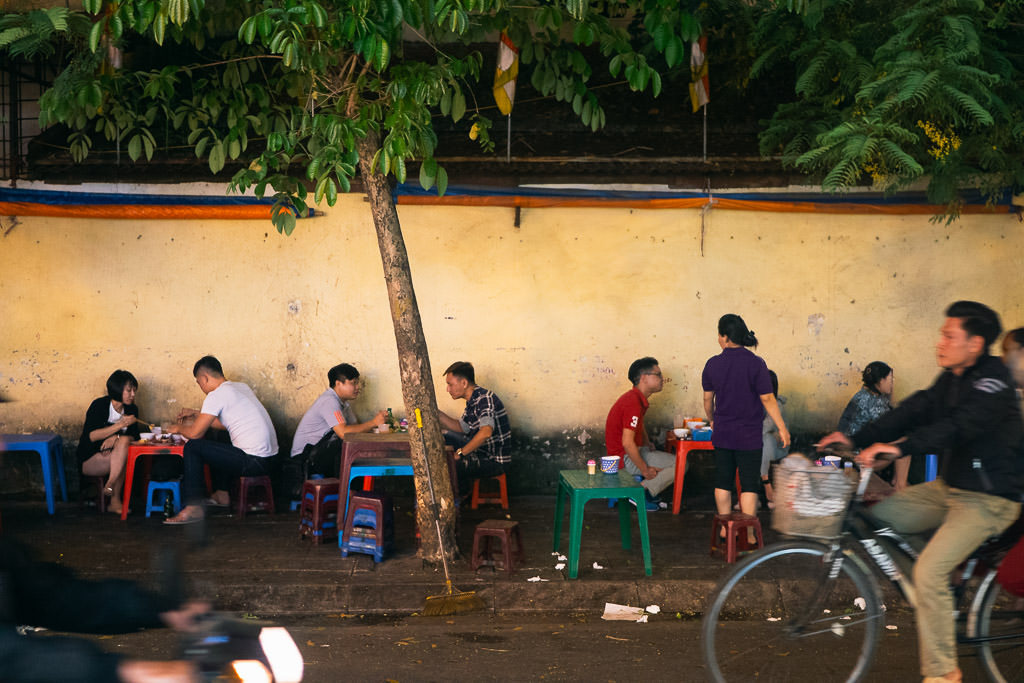
Hundreds of the little often seats line the streets, nearly all of them a specific shade of blue or red. On the busiest streets, the stools are movable islands above the gradually deepening layer of plastic cups, skewers, bones, napkins, baguette ends, and evidence of beautiful street food gluttony.
The smaller the stools, the smaller the bill, and the smaller the space between each patron and their neighbour. Eating in Vietnam is not only about the flavors, but the culture that surrounds it.
Whether you’re seeking the best noodle soups or diving into the thriving cafe culture, here are some of the best things to try.
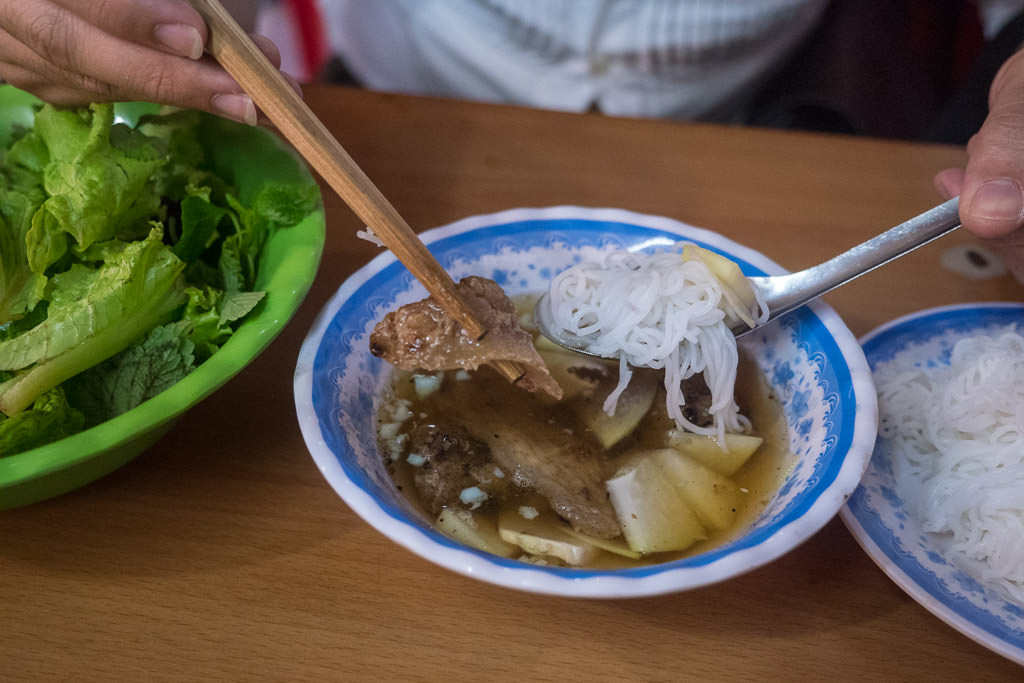
1. Bún Chả – Obama’s Favorite Rice Noodles
If you’re going to eat one street food in Vietnam, it should probably be bún chả. Although it’s simple, it’s probably my favorite Vietnamese dish!
Most common in Hanoi, it’s a spread rather than a single dish: thin rice noodles (bún – pronounced “boon”), pork, a salty-sweet dipping sauce with a little garlic and chili, and fresh herbs – basil, cilantro, green onions, with lettuce. Bún chả is eaten by combining the ingredients in a small bowl, with each person eating multiple bowls.
The late traveller-chef Anthony Bourdain couldn’t stop raving about the food in Vietnam, even inviting President Obama to share a meal with him there. The two ate at Bún chả Hương Liên, south of Hoan Kiem Lake in Hanoi. Amazingly, the table where they ate their bún chả has since had a display case built around it.
Tip: veggie in Vietnam
If you’re vegetarian or vegan, just type “chay” into Google Maps and you’ll find plenty to eat in Vietnamese cities. Chay food can be hit-or-miss though and it’s sometimes hard to find in villages in the countryside.
2. Egg coffee
Vietnam is a major coffee-growing country, mostly of the highly caffeinated robusta variety rather than the subtler flavors of arabica. Vietnam has a distinct coffee culture that’s very fun to dive into.
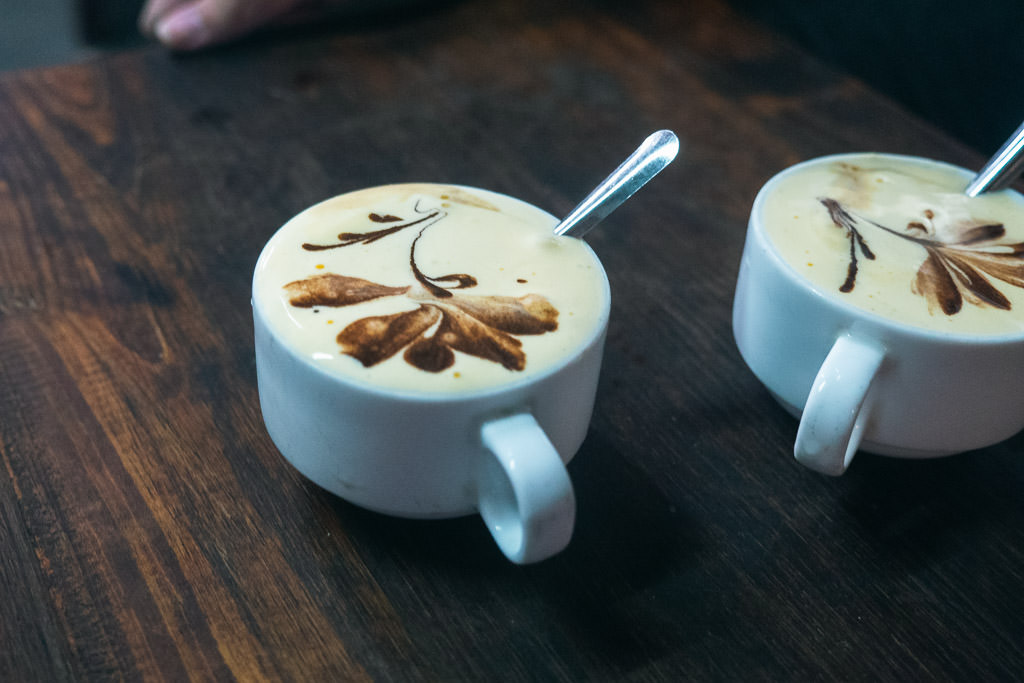
If you like your coffee black and bitter then you may have to resort to ordering Americanos, because very sweet and creamy is the preferred style in Vietnam.
Vietnamese coffee is brewed in a phin – a small metal cup that fits over a mug. A big helping of sweetened condensed milk is usually added.
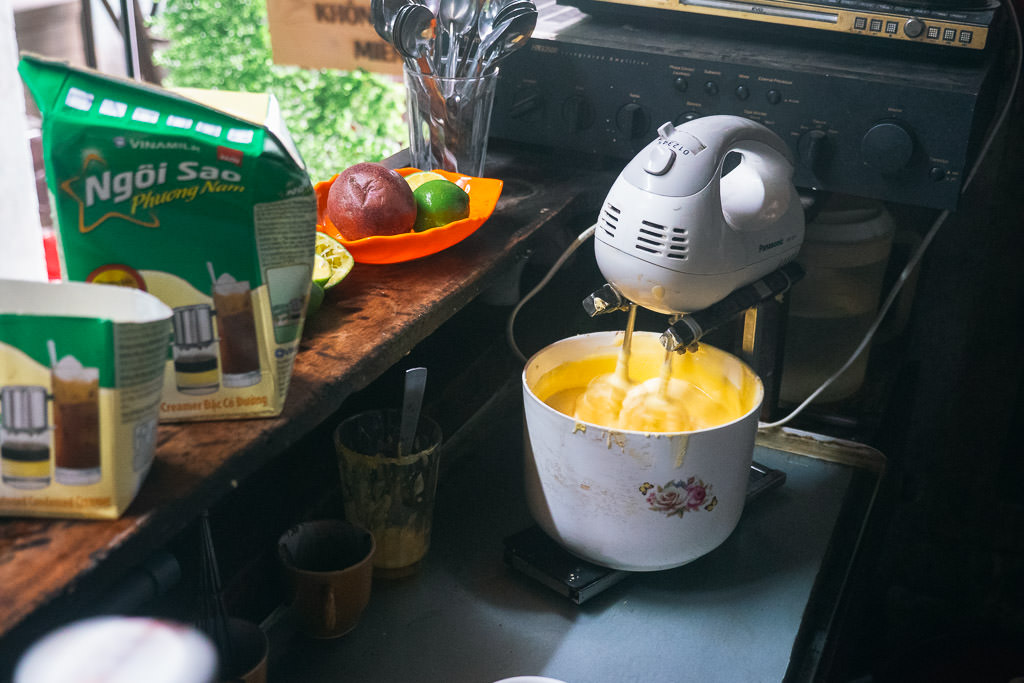
An even more local take is the egg coffee, known as cà phê trúng.
It was invented in a cafe in Hanoi in the late 1940s during a milk shortage, using egg yolk instead. This may not immediately sound so appetizing, but it makes for a rich and surprisingly good dessert coffee. The drink can now be commonly found across Vietnam.
Tip: local cafe culture
One of my favorite activities is to hunt down small hole-in-the-wall cafes. I wrote about the wonderful hidden cafes in my guide to Hanoi. In Saigon, don’t miss the Cafe Apartments, a 9-story apartment block from the 1960s that now houses numerous indie coffee shops.
3. Phở – Noodle Soup
Phở (pronounced “fuh”) is the best-known of Vietnam’s many noodles soups. It’s thin, flat rice noodles and usually chicken (phở gà) or beef (phở bò), but it’s phở broth that gives the soup its muscle. The broth’s ingredients vary, but the flavor is also built over hours of simmering – one vendor on Thuốc Bắc street in Hanoi’s old quarter said he keeps his broth cooking for ten hours.
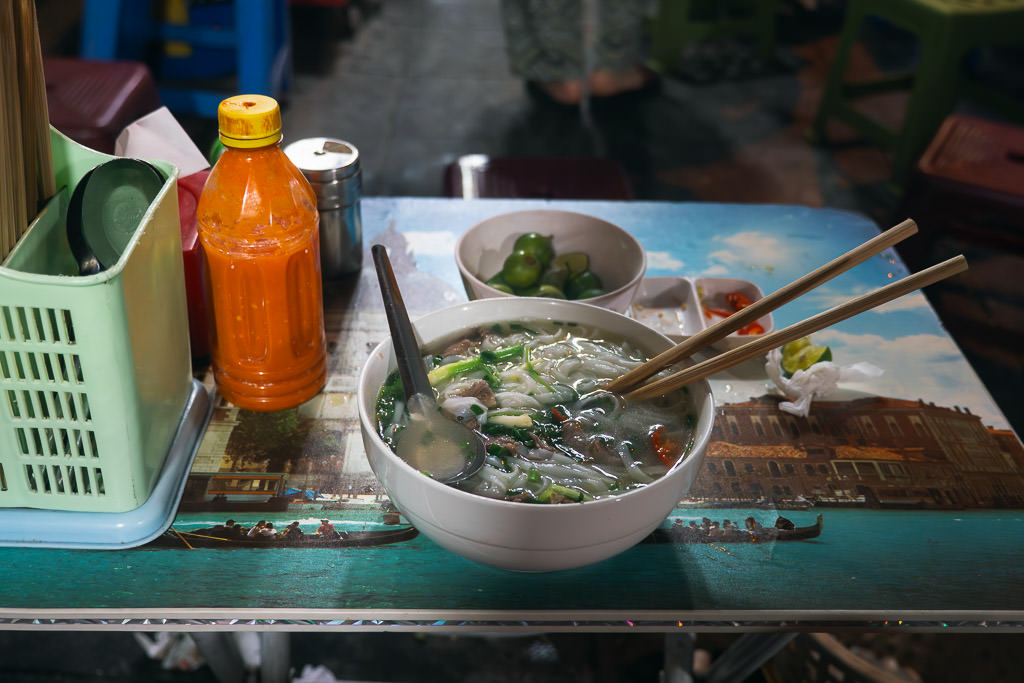
Northern-style phở, called phở bắc, is made with a simpler-tasting broth, more green onions, and the beef usually looks to be minced or on-the-bone.
Southern-style phở, called phở Nam, is a little sweeter and darker and served with hoisin sauce. Vegetarian phở does exist, mostly in “chay” restaurants – chay is Vietnamese for vegetarian or vegan.
4. Gỏi Cuốn or Nem Cuốn – Fresh Spring Rolls
Often called salad rolls or spring/summer rolls, gỏi cuốn (“goy coo-uhn”) are rice paper wraps around some mix of fresh vegetables, bún noodles, pork, shrimp, and tofu, served fresh.
These are best if you can get them served with hoisin or peanut sauce (sometimes it’s just fish sauce or sweet chili). They’re also called nem cuốn (“nehm coo-uhn” in the north).
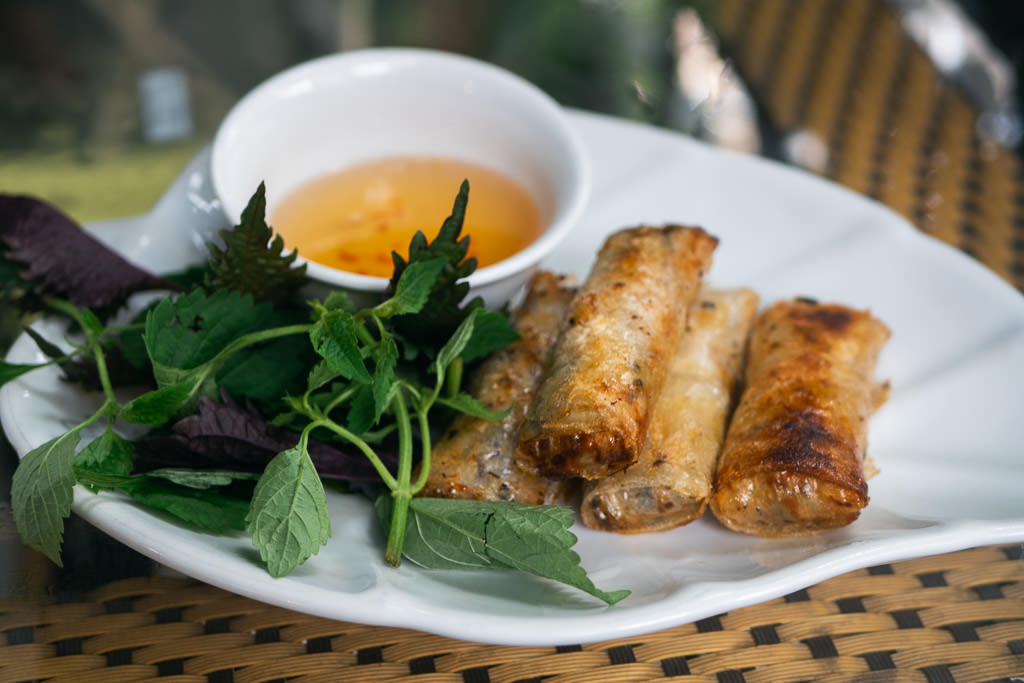
5. Chả Giò or Nem Rán – Fried Spring Rolls
Chả giò (“chah zahw”), or nem rán in the north (“nehm rehn”), are the fried iteration of spring rolls. They’re usually ground meat and minced vegetables, rolled in rice paper and fried until crispy.
You’ll see pyramids of them in markets in Vietnam, premade and ready to take away. They’re also served cut up with bún chả (see below) as a dish called bún chả giò, and they’ll show up as an appetizer everywhere – drinking stalls, bus stations, or the freezer at VinMart.
6. Bánh Mì Sandwiches
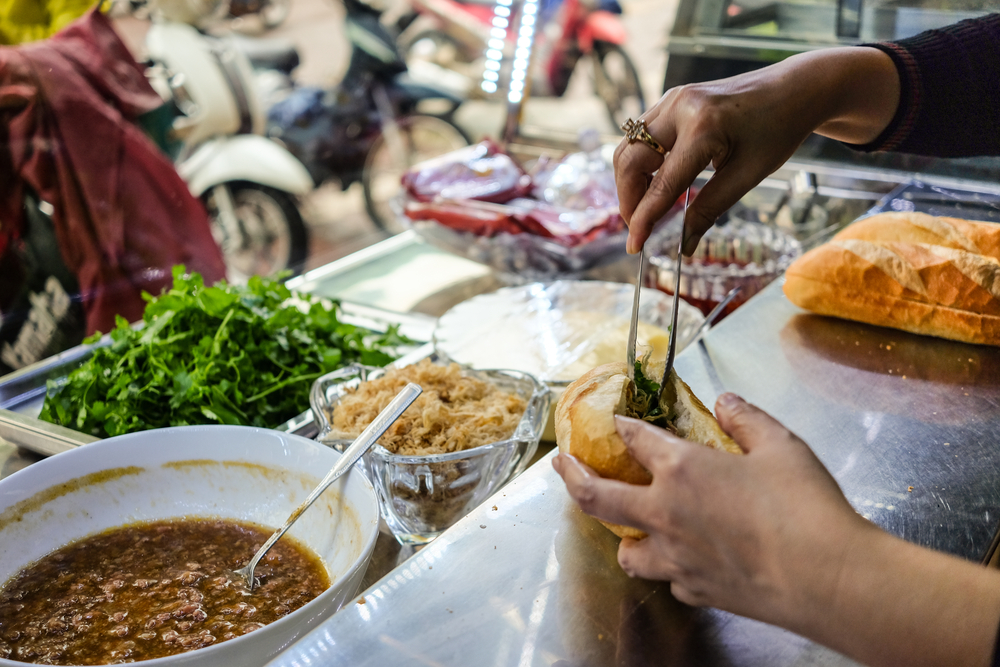
Foodie restaurants around the world are using bánh mì as an excuse to serve some great Southeast Asian-inspired creations between pieces of bread. These sandwiches are taking over the world for good reason.
Vietnam’s national sandwich is a white baguette stuffed with pâté, egg, sausage, or pork belly on a bed of cilantro, peppers (jalapeños or others), cucumber, chili sauce, mayonnaise, and pickled daikon radish and carrots. Ideally, the bread is toasted and there are some added toppings you can throw on there – sauteed onions, tofu, etc.
They cost anywhere from 12,000 to 50,000 dong and I end many days in Vietnam thinking I should be eating more bánh mì.
7. Banh Xeo – Crispy Yellow Pancakes
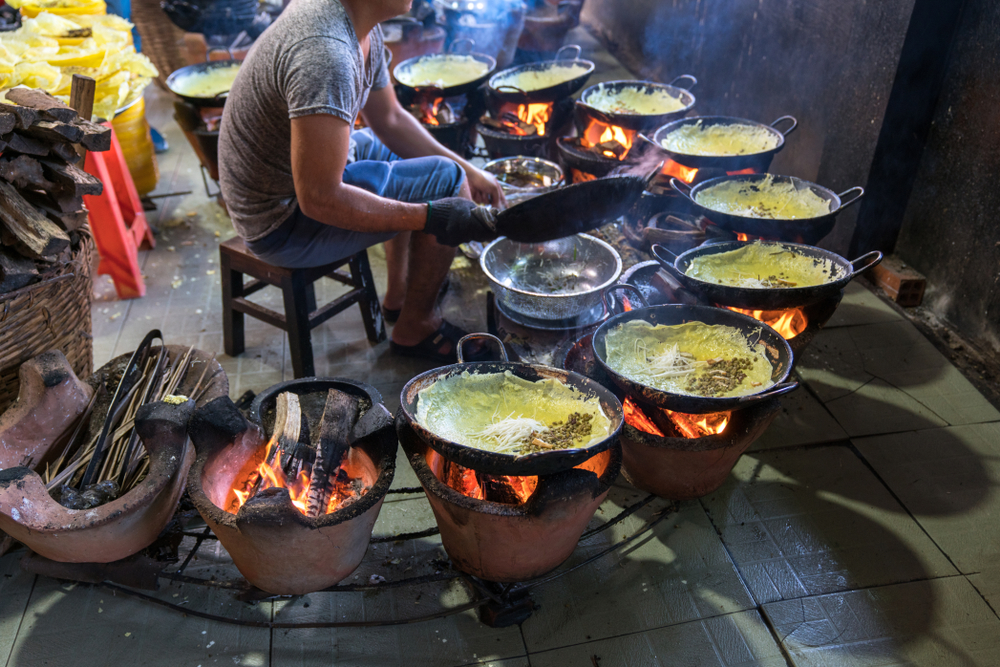
Bánh xèo (“bahn say-oh”) are crispy, thin yellow pancakes made with rice flour and a little turmeric and fried up in a skillet. They’re usually filled with some combination of bean sprouts, shrimp, pork, and green onions.
But the best part of eating at a bánh xèo stall is the full spread that comes along with them. There’s the plate of fresh herbs, the dipping sauces, the optional plates of tater tot-style fried potatoes or lemongrass pork skewers (nem lụi), and the best of all – spring roll wraps.
Vietnamese folks use either dried or fresh noodle-like rice papers to roll up the bánh xèo with the herbs, chilis and whatever else is on the table. The other toppings for bánh xèo vary, but include everything from minced pork with peanuts and chili to green bananas and star fruits.
Tip: finding local eateries
It’s common in Vietnam for places to be named simply with the kind of food their serve, followed by their address. Simply typing “Bánh xèo” into your favorite map app will yield a great many results. For example, in Hanoi you might head to Bánh xèo Sáu Phước or Bánh xèo Nem lụi 167 quán.
8. Bánh Bao – Steam Buns
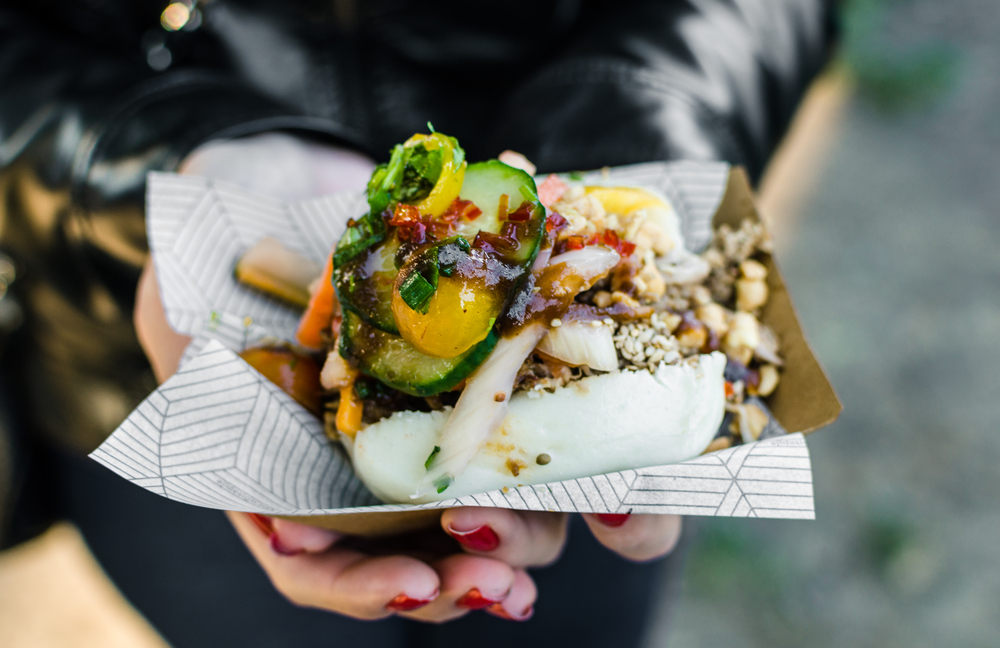
Bánh bao are your classic steam buns and they’ve become a bit of a comfort food. They’re made with savory fillings – pork, salted quail egg with pork, barbecued pork, mixed veggies, or mysterious but great vegan things – and with sweet fillings: taro, custard, pandan, and the list goes on.
Look for big silver steamers in front of any shop, even the corner store that sells nothing but cigarettes and Red Bull. They’re also kept in hot-holding cabinets with metal shelves. VinMart sells them, if there’s no other option.
9. Bánh Cuốn – Ultra-Thin Steamed Rice Pancakes
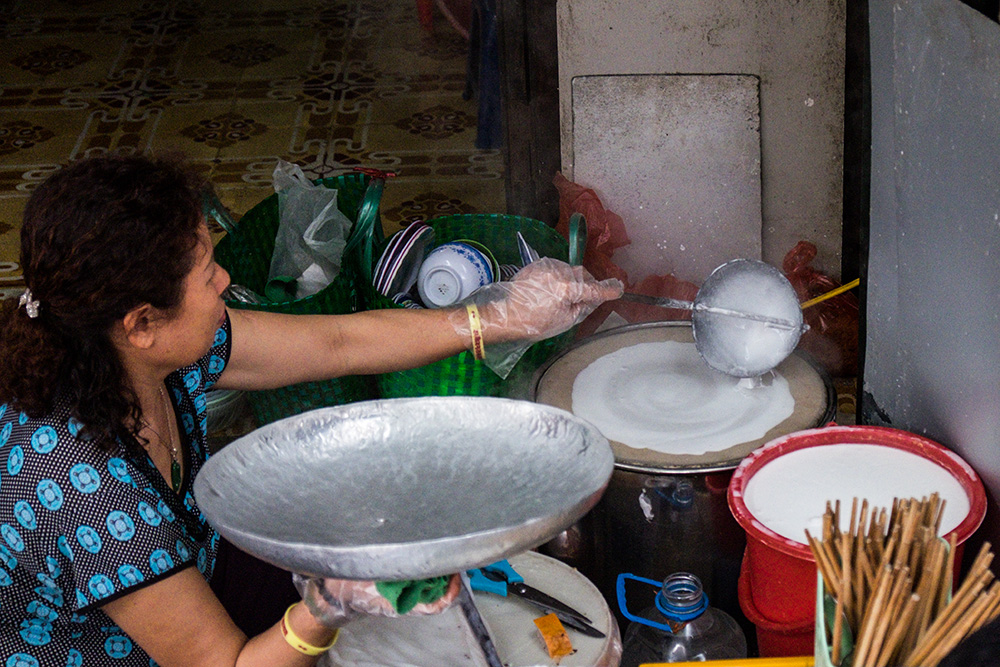
They’re not crepes and they’re not rice paper rolls. Bánh cuốn are impressive to watch being made – the cook spoons ultra-light fermented rice batter across a cloth, pulled tight over a pot of boiling hot water. The batter settles and steams, thickening slightly and forming a light, soft base. The cook cracks an egg on top or spoons a line of minced pork and dark brown “wood ear” mushrooms down the middle, lets the filling cook, and then uses a wooden stick to fold the fragile bánh cuốn over itself and lift it off the cooking cloth.
The bánh cuốn is served cut in pieces and topped with deep fried shallots. Eat it with chopsticks and dip each piece into the mildly sweet sauce. Sometimes bánh cuốn shops serve a bit of pork pâté on the side. Bánh cuốn shops are often open only for breakfast, so go early just in case.
10. Chè – This Dessert is the Next Bubble Tea
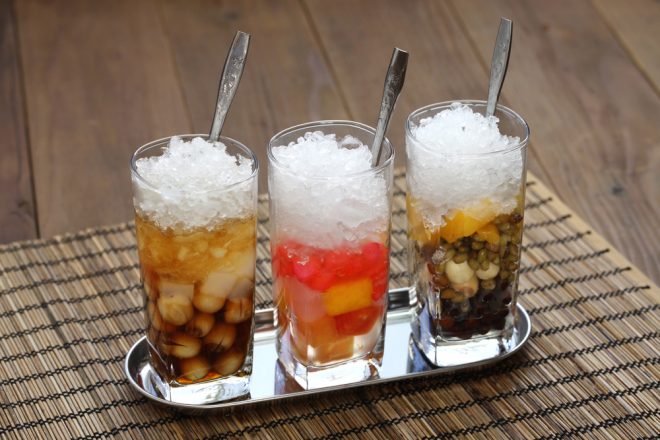
Chè seems to be an all-encompassing term for Vietnamese desserts involving jellies, diced fruit, tapioca, beans, syrups, coconut, taro, and plenty of things I can’t identify. It’s a relative of cendol, and served both hot and cold.
Most chè shops are set up buffet or fast casual style: the pieces are all laid out in bowls, just point to what you want, tell them if you want some ice in there to make it cold, and they’ll tell you how much it costs at the end. It won’t be more than 40,000 dong (<$2).
Just like with big bubble tea shops, the options are endless. Fruits usually include lychee, jackfruit, longan, or mango, while jellies include black grass jellies and palm seeds. Maybe read this guide to chè before you go.
Adventurous food in Vietnam
The above list should serve as a perfect starter pack for exploring the drinks and dishes of Vietnam.
For a deeper dive, I can very much recommend taking a local food tour in whatever city you first land in Vietnam. For instance, this excellent street food tour in Hanoi will give you a crash course in all the local eats.
As you explore and pluck down in local restaurants, you will surely make your own discoveries. Some of the dishes in Vietnam can actually be quite unusual. You may peruse the menu and find such peculiarities as “grilled frog with lolot pepper” or “stewed pigeon with lotus seed”. Hmm.
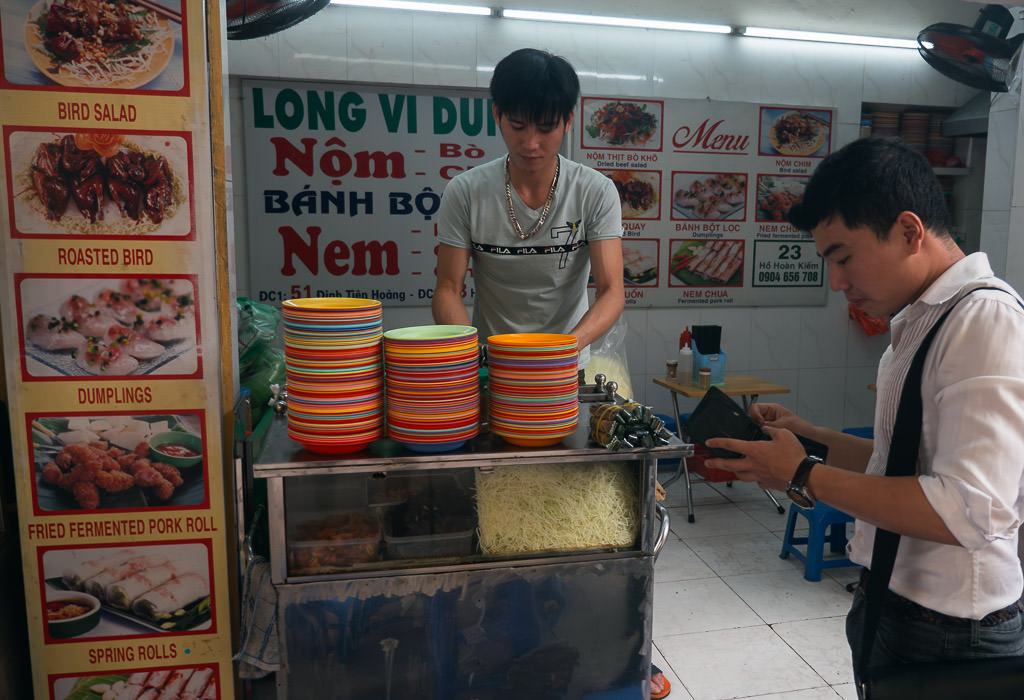
(Or maybe you’d like to try some… bird salad?)
If you are a very adventurous eater you may even hear of some of the more extreme things to try.
One infamous menu item is hột vịt lộn — fertilized eggs that have been allowed to develop for a couple of weeks. They’re hard boiled and then cracked open and eaten with fresh herbs, salt, lime, pepper, and chili.
Yep, fetal duck egg may not sound so appetizing. They’re a common snack in Vietnamese cuisine but not everyone eats them. But if you’re curious, this blog actually makes a fairly compelling case for giving them a go.
Then there is of course the legendary dog meat, often a subject among backpackers in hostel bars due to the shock factor and potential for tall tales.
Rest assured, there won’t be any dog meat in your pho. But if you know where to look, there are certain streets where you can find dog on a spit roast. If you try to take any pictures, you’ll likely be chased away, as nosey tourists are not appreciated. They were never pets, of course — and there’s no logical difference with eating chicken or pork — but different cultural norms can still make it an unsettling sight.
But it’s certainly not these rare and outrageous eats that I associate with Vietnam. It is truly the delicious dishes full of flavors sold on every sidewalk or in casual restaurants all over town. One block may have stalls serving classic noodle soups of phở bò and bún cha with baskets of fresh herbs to mix in, others perhaps crispy bánh xèo “pancakes” or nem rán fried spring rolls. The real adventure is simply to sit down on one of the plastic stools and to dig in without reservation.
Some links may be affiliate links, meaning I may earn commission from products or services I recommend. For more, see site policies.
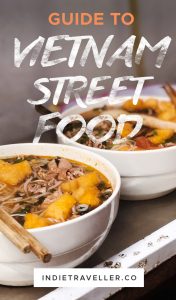
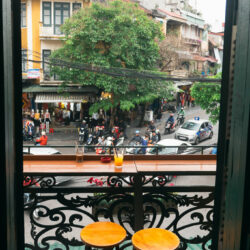
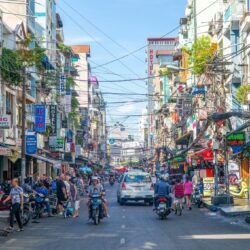




Thank you very informative about the food, I am a vegetarian so now I know what to look out for. I intend travelling through Vietnam in September of this year for around 20 to 21 days. The idea of fetal eggs disgust me, eggs cooked with a live fetal in there, how painful. I saw plenty of this in Laos, especially at the markets.